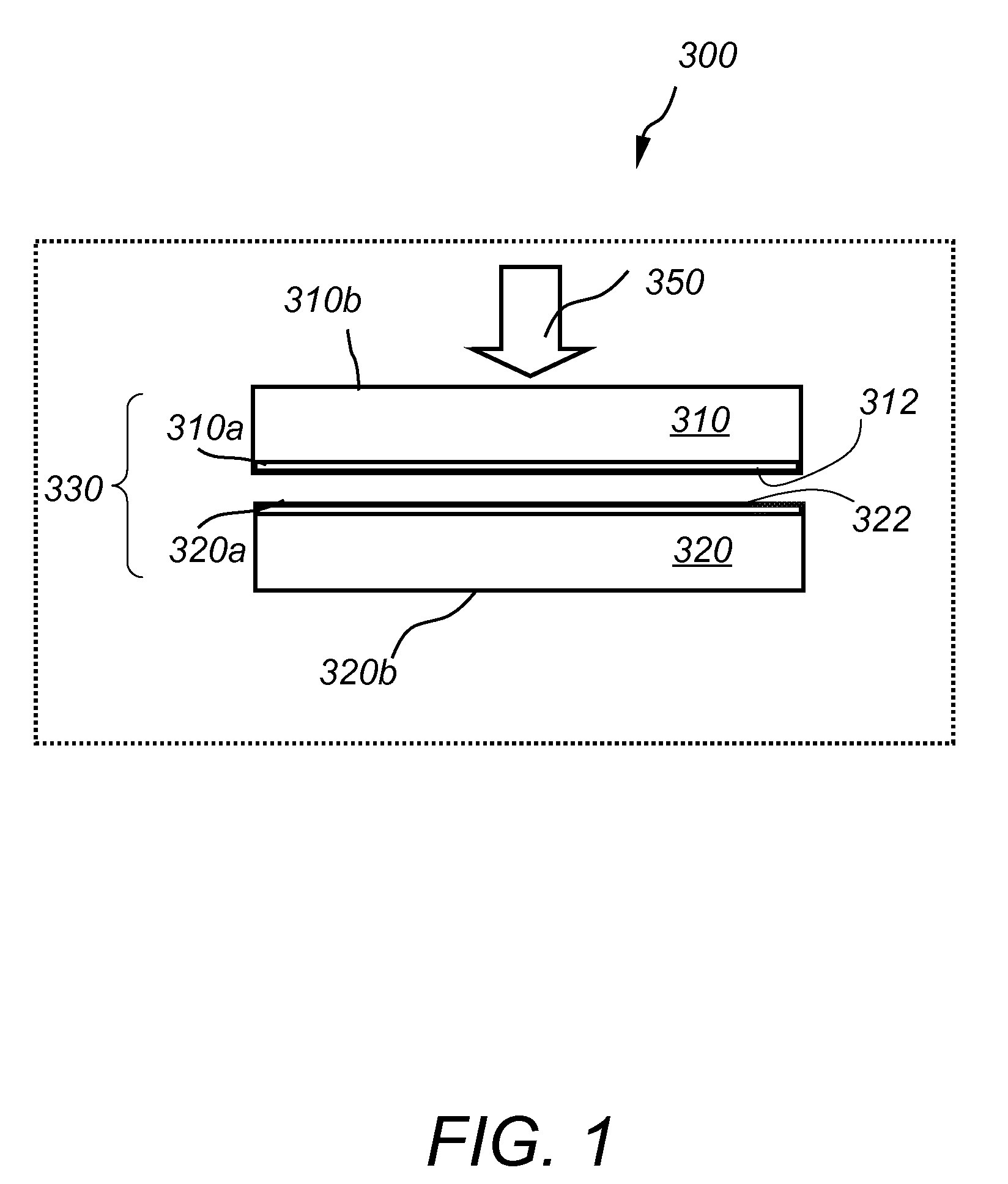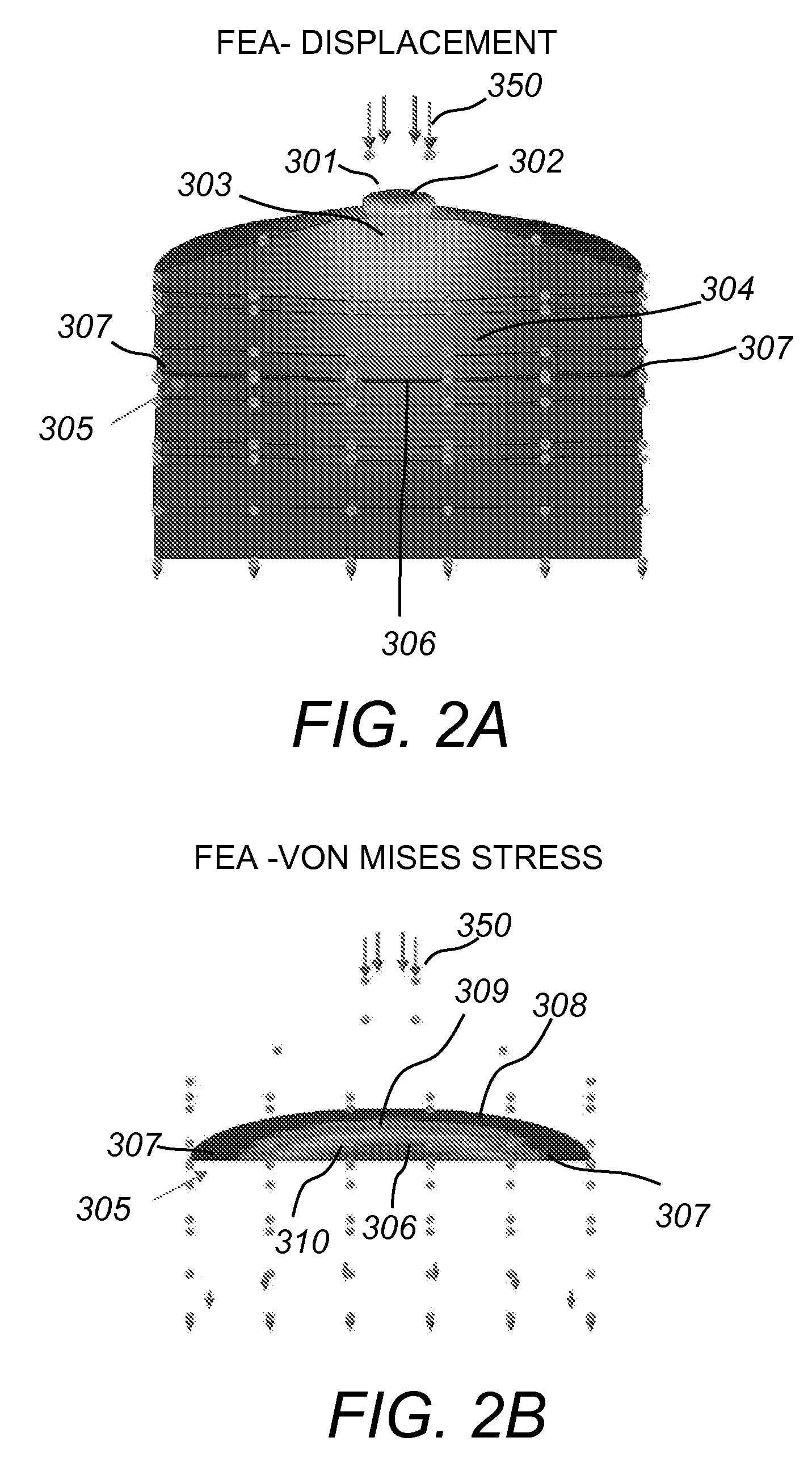Apparatus and method for semiconductor bonding
a technology of apparatus and semiconductor, applied in the direction of electrical apparatus, semiconductor devices, basic electric elements, etc., can solve the problems of manufacturing losses, defects, and the cost of semiconductor devices in the production of consumer electrical and electronic devices, and achieve the effect of reducing conta
- Summary
- Abstract
- Description
- Claims
- Application Information
AI Technical Summary
Benefits of technology
Problems solved by technology
Method used
Image
Examples
Embodiment Construction
[0035]Referring to FIG. 1 in a prior art wafer bonding system 300 a first wafer 310 having a bond layer 312 on a first surface 310a is brought into contact with a second wafer 320 having a bond layer 322 on a first surface 320a, so that the two bond layers 312 and 322 are opposite to each other. The wafer bonding process involves compressing the two wafers together by applying a force 350 on a second surface 310b of the first wafer 310. Force 350 is usually applied to the center of the wafer stack 302 with a piston-type mechanism, as shown in FIG. 1. In other embodiments force 350 may be applied in the periphery of the wafer stack 302 or a second force may be applied simultaneously with the force 350 on the second surface 320b of the second wafer 320. Finite element analysis (FEA) of the displacement along the bond interface 305 is shown in FIG. 2A. We observe the formation of a “hot pressure spot” directly underneath the central area 301 where the force 350 is applied. A first sphe...
PUM
 Login to View More
Login to View More Abstract
Description
Claims
Application Information
 Login to View More
Login to View More - R&D
- Intellectual Property
- Life Sciences
- Materials
- Tech Scout
- Unparalleled Data Quality
- Higher Quality Content
- 60% Fewer Hallucinations
Browse by: Latest US Patents, China's latest patents, Technical Efficacy Thesaurus, Application Domain, Technology Topic, Popular Technical Reports.
© 2025 PatSnap. All rights reserved.Legal|Privacy policy|Modern Slavery Act Transparency Statement|Sitemap|About US| Contact US: help@patsnap.com



